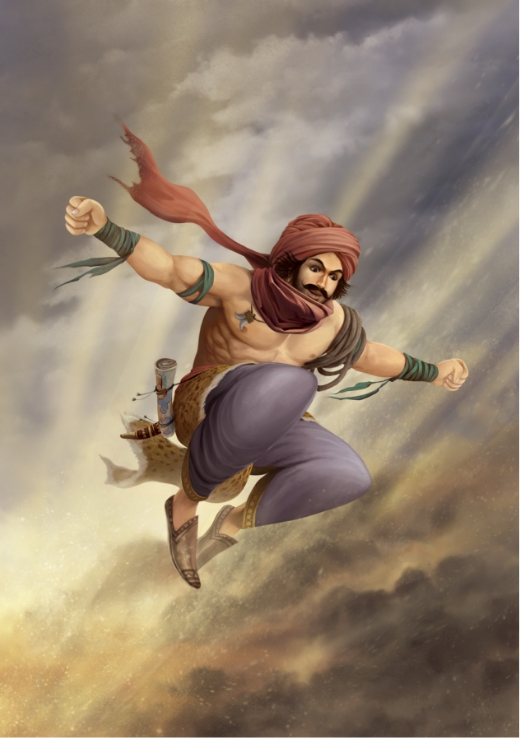
Bharata
Set in 600 BC, the board is a real map of India. This was the end of the Vedic period that saw the rise of the 16 Mahajanapadas (Great Kingdoms). Each player assumes the role of a ruler of one kingdom, trying to make it the most predominant power in the ancient subcontinent. The game may be won through warfare, resource management, or diplomacy, choosing their style of play.
We designed the components of this game for GoIndia Games – a Bangalore-based game design studio. For them, it was important that all the components were designed, inspired by, and made in India.
Designed, made, and inspired by India-
We referenced mythology and culture - old and new. For example, the Daredevil character resembles Shahid Kapoor (a Bollywood actor). His clothes, jewelry, and possessions are historically accurate, while his 6 pack is artistic liberty.
A game that allows you to discover your personality-
There are 4 characters - and players get to choose their character on the basis of their own personality. The Daredevil takes risks, the Conqueror is combative, the Leader is goal-oriented, and the Influencer masters diplomacy. This game allows you to discover your own play style. Do you like building your kingdom from scratch? Do you favor conflict or diplomacy? Do you have a penchant for politics? What’s your leadership style - to wage wars, to manage your resources, to make alliances, or to charm people? When I played this game, it was for the first time I have ever asked myself these questions.
Meet the makers of the wooden parts-
The wood components were made in Channapatna, even though it is much easier and cheaper to buy wooden pawns from China. There was a commitment to keep it made in India. Every wood component is handmade by local artisans, using a wood carving and lacquering technique from the 18th century. The carved wood pieces are then dyed with natural colors extracted from vegetables.
Though war games may have alpha connotations, Bharata 600 BC was designed by a woman, for a woman-led game design studio, so it lacks the brute-force approach. Rather it is descriptive, illustrative ― beautiful I might add.
Historically accurate
For the game elements to be historically accurate, we had to read many history books and documents to understand the dress of the time, the materials in use, the architecture, jewelry, and even the dyes available to color the garments of those times. We take a lot of things for granted now, such as paper, but in 600 BC paper was not invented. One character in the army is wearing a finger protector, and we read up to understand how that could have been designed. What materials were the forts made of? (above example - Ahichhatra fort in present-day UP). What the bow was made of -wood and bone, what the chariot looked like, how the sailboats really looked like, and what kind of textiles and textile colors were in use.
The power of representation
In the board games we played as children, such as Monopoly, or the dolls we played with - Barbie, there was a subliminal cultural subversion, making us believe that it was aspirational to own a property on Leicester square, or to have blonde hair and blue eyes. This game has Indian characters set in India. Representation is our soft power. Just like our mythology, our films, our music,and our textiles, there is a way to influence the west with our beauty, through fun and games.
This project was certainly one of the most challenging I have ever been a part of, from hiring the right team to translating the client’s brief to real components. A special mention to Ishan Trivedi who is one of India’s most talented illustrators and worked with our brief to make all the illustrations. It was an insight into the complexities of game design, where reality, play, and fiction weave in and out. I hope that it sets a trend for games made in and inspired by India, as we chart our way to becoming a superpower through our cultural influence on the world.











Next Project
